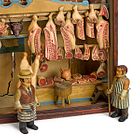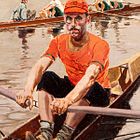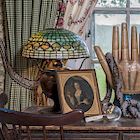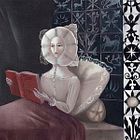100 Years | The Kindig Legacy
- Auction House
- Antiques
- Arnchairs
- Chest of Drawers
- Chests
- Furniture
- Mahogany Chairs
- Pennsylvania Queen Anne
- Pook & Pook Inc.
On February 8th and 9th, 2024, Pook & Pook is honored to present the 100 Years: The Kindig Legacy. For a century, the Kindig family of York, Pennsylvania has dealt in the finest antiques available. Joseph Kindig, Jr. opened his first shop in 1925, coinciding with the antique craze that swept America in the 1920s. Kindig’s shop flourished, and put him on the forefront of the expansion of scholarship and collecting. His clients included the foremost collectors of American decorative arts of their time: Henry Francis du Pont, Ima Hogg, Wallace Nutting, and Frances P. Garvan. Kindig shared a close working relationship with du Pont, and the historic Winterthur Collection reflects his expertise. Over his career, he guided Colonial Williamsburg, Winterthur, Bayou Bend, the Baltimore Museum of Art, the Philadelphia Museum of Art, the Metropolitan Museum of Art, and many others in the acquisition of masterpieces. In 1947 Joe Kindig III joined his father’s business, and they worked together for twenty years. Joe Kindig III was an intellectual drawn to subjects ranging from architectural history to a continuation of his father’s study of the Kentucky long rifle. He became an authority, researching and uncovering masterpieces. Joe III also curated exhibits for the Historical Society of York County, and the furnishing of Wright’s Ferry Mansion, which Kindig termed “the best representation of a Queen Anne house in Pennsylvania.” Joe Kindig III worked closely with Dr. Donald Shelley, whose Pioneer Collection was auctioned for a record $9.8 million by Pook & Pook in 2007. In 1994, Joe III was joined by his own daughter, Jennifer, and the family business flourished into the 21st century. The Kindig Collection reflects the family’s interests and expertise. The furniture is mostly early American, and the decorative arts contain a large percentage of English and some Continental items.
The heart of the Collection’s furniture is regional, with an emphasis on Philadelphia. The earliest furniture includes two pairs of Cromwellian chairs. Pennsylvania William and Mary pieces include several Southeastern Pennsylvania William and Mary walnut wainscot armchairs, a Pennsylvania William and Mary walnut desk and bookcase, and other Pennsylvania William and Mary items including a burl mahogany slant lid desk, stools, chairs, and a tall case clock. Queen Anne highlights include a rare Chester County Queen Anne walnut Octorara chest with removable legs, ca. 1765, and a beautiful Pennsylvania Queen Anne tiger maple dressing table, amongst additional Pennsylvania Queen Anne dressing tables, compass seat chairs, and a tall case clock.
Important Philadelphia Chippendale pieces include a mahogany three-part desk and bookcase, with carving attributed to Martin Jugiez. A rare pair of Philadelphia Chippendale mahogany gaming tables, also with carving by Jugiez are one of a very few surviving pairs of these tables. A rare Philadelphia Chippendale mahogany piecrust tea table is possibly by Nicholas Bernard. Other fine Philadelphia Chippendale items include a carved high chest, a cherry chest on chest, a dressing table attributed to the “cornucopia carver”, a pair of dining chairs, tall case clock, and two desk and bookcases. Leaving the city limits, Pennsylvania items not to miss include a rare Chester County walnut Octorara tall chest, and a Queen Anne tiger maple dressing table.
Other Chippendale furniture includes a New York mahogany easy chair, and a mahogany games table, possibly from the workshop of Gilbert Ash. A Baltimore Chippendale mahogany high chest was formerly exhibited at the Baltimore Museum of Art on long-term loan. An international highlight is an excellent Irish Chippendale mahogany sofa, ca. 1765.
Notable Federal furniture pieces include a Salem, Massachusetts inlaid breakfront bookcase, ca. 1800, a Massachusetts mahogany sofa, ca. 1790 and attributed to Samuel McIntire, and a rare Baltimore slab table with King of Prussia marble top.
For the walls, there is a large art collection with many English landscapes, portraits, equestrian, and hunting scenes. An oil on panel full-length portrait of a young noble girl from the early Stuart period, dated 1619, bears lace so vivid and textural it appears embroidered onto the painting’s surface. A massive Queen Anne burl veneer looking glass, amongst smaller Queen Anne examples, Chippendale looking glasses, and a Constitution mirror, are all perfect for reflecting candle light provided by a fine collection of early brass candlesticks. Reigning over the early brass group is a magnificent Northwest European Three Kings candlestick, 15th c., one of the tallest and best examples of this form, with Blagojevich provenance. English 16th c. Tudor candlesticks, German, Nuremberg, and Northwest European examples complete the group. A large assortment of andirons range from late 17th c. English to 18th c. Philadelphia Chippendale.
Textiles include a large Flemish verdure tapestry, fit for a castle. Complete sets of 18th c. crewelwork curtains, and many finely embroidered spreads dazzle the eye. An extraordinary Continental feltwork spread exhibits a coat of arms and a multitude of figured panels, dated 1749. Ten English 17th c. stumpworks, beadworks, and needle works line the walls, including Charles II examples, depicting kings and queens, lords and ladies, and an abundance of flora and fauna.. A multitude of 18th c. English needle works include a silk and metallic portrait of King George, and a pair of George III scenes of the conquest of Mysore depicting the plight of Tippoo Saib hostages. 18th and 19th c. needleworks portray everything from kings and biblical scenes to stately homes.
Silver from early American silversmiths such as Tobias Stoutenburgh, New York, 1721, and Johannis Nys, Philadelphia, ca. 1695, also includes a very rare sucket fork by John Brevoort, New York, ca. 1742.
The assortment of delftware includes English Bristol and Lambeth and Dutch examples. A Bristol posset pot and cover stands out amongst the many chargers. An array of Southeastern Pennsylvania sgraffito decorated earthenware includes large dishes and a rare openwork tobacco box and cover attributed to the workshop of David Haring.
Early Pennsylvania German folk art includes valentines, fraktur, and fraktur bookplates, with artists Andreas Kessler, Martin Brechall, the Garden Border Artist, Johann Peter Gilbert, Stephan Meyer, Christian Mertel, Christian Allsdorf, Jacob Oberholtzer, Daniel Otto, and Johann Adam Eyer.
A library of canonical architectural design books contains many first editions, including the first translation of Andrea Palladio published in English, works by Colen Campbell, James Gibbs, Inigo Jones, Isaac Ware, Matthias Darly, William Pain, and the rare The Works in Architecture, London, of Robert and James Adam, Esquires. Furniture design classics include The Gentleman and Cabinet-Maker Director by Thomas Chippendale, and The Cabinet-Maker and Upholsterer’s Drawing-Book by Thomas Sheraton. Ornamental design classics range from Placido Columbiani and Gaetano Brunetti to Matthias Lock and Robert Manwaring. Military subjects include a 1553 Vegetius De Re Militari Libri Quatour, and the 1626 Il Torneo by Bonaventura Pistofilo with engravings of weapons and drills. The Kindig Ephrata books were the subject of an exhibition at Ephrata Cloister in 2012 and feature a very rare 1763 imprint Metallen amongst the mostly religious texts, which include a provenanced Martys Mirror, 1748, and the beautifully illuminated manuscript hymnals for which Ephrata is famous.
Please join us on February 8th and 9th for what is certain to be a major auction event, honoring the Kindig Legacy and its century of scholarship, stewardship, and masterpieces. For more information, please call (610) 269-4040, email conditions@pookandpook.com, or visit Pook & Pook’s catalog on Bidsquare.
By Pook & Pook Inc
Copyright © 1999 - 2025 Pook & Pook Inc. All Rights Reserved.
- Arts Foundation of Cape Cod Assembles Artwork From Top Artists for Its Annual Deck the Walls Auction
- WINTER AUCTION OF JEWELRY & TREASURES COMES TO TURNER AUCTIONS + APPRAISALS ON DECEMBER 13
- Rafael Osona Holiday Auction Features Fine Art, Jewelry & Maritime Works
- Post-Auction Press Release, Americana Auction, October 1,2,3, 2025 at Pook & Pook
- TURNER AUCTIONS + APPRAISALS PRESENTS THE GLADYNE K. MITCHELL COLLECTION ESTATE ON JULY 19
- Celebrate American Heritage with Dana Auctions’ January 25 Antique and Vintage Quilt and Textile Auction
- Exciting Online Auction from Rafael Osona Auctions - Exceptional offerings across multiple categories
- DIAMONDS ARE FOREVER: FINE JEWELRY, DIAMONDS & MORE COME TO TURNER AUCTIONS + APPRAISALS
- TAKE TIME OUT TO VIEW SPORTS MEMORABILIA, COMING TO TURNER AUCTIONS + APPRAISALS ON AUGUST 17
- Rafael Osona Announces Two Day Auction, Aug 3 & 4, 2024 Americana, Fine Arts, Historic Nantucket, Décor ~ Saturday, August 3 The Marine Session ~ Sunday, August 4 Open for Bidding ~ 1000 Lots ~
-
Antique Toy Auction at Pook & Pook Inc, with Noel Barrett

-
Sporting Immortality

-
The Collection of Mrs. John Gutfreund – Murray House, Villanova, Pennsylvania

-
Leonora Carrington Oil Painting Sells for More Than Twice the Asking Price in the Latin American Art Auction Hosted by Morton Subastas in Mexico City

-
Peter Tillou Collection Highlights Litchfield Auctions’ 25th Anniversary




 EUR
EUR CAD
CAD AUD
AUD GBP
GBP MXN
MXN HKD
HKD CNY
CNY MYR
MYR SEK
SEK SGD
SGD CHF
CHF THB
THB
